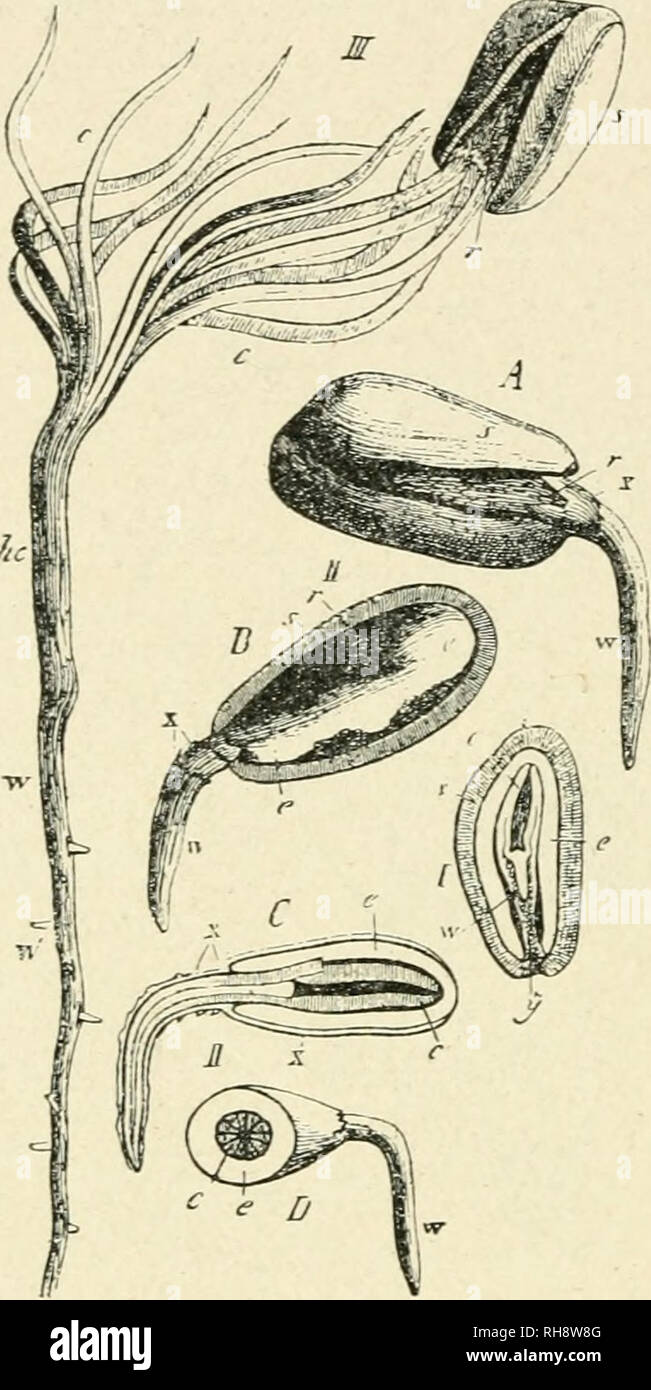. Botany of the living plant. Botany. 314 BOTANY OF THE LIVING PLANT off, and the cotyledons expand round the central plumule (Fig. 256, III.). Thus the seedling is established. On comparing the two Divisions of Seed-Plants substantial simi- larity is seen in the leading facts of form, structure, and physiology. But there are many details which support the geological history of Gymnosperms in showing that they are relatively primitive among Seed-bearing Plants. This is seen in their lower degree of vegetative differentiation, and their less ready adaptability to the surroundings, which gives t

Image details
Contributor:
Library Book Collection / Alamy Stock PhotoImage ID:
RH8W8GFile size:
7.1 MB (296 KB Compressed download)Releases:
Model - no | Property - noDo I need a release?Dimensions:
1119 x 2233 px | 18.9 x 37.8 cm | 7.5 x 14.9 inches | 150dpiMore information:
This image is a public domain image, which means either that copyright has expired in the image or the copyright holder has waived their copyright. Alamy charges you a fee for access to the high resolution copy of the image.
This image could have imperfections as it’s either historical or reportage.
. Botany of the living plant. Botany. 314 BOTANY OF THE LIVING PLANT off, and the cotyledons expand round the central plumule (Fig. 256, III.). Thus the seedling is established. On comparing the two Divisions of Seed-Plants substantial simi- larity is seen in the leading facts of form, structure, and physiology. But there are many details which support the geological history of Gymnosperms in showing that they are relatively primitive among Seed-bearing Plants. This is seen in their lower degree of vegetative differentiation, and their less ready adaptability to the surroundings, which gives to these plants their stereotyped appearance. Their sim- pler vascular construction points in the same direction, in particular the absence of vessels from the wood of most of them, which is matched by some members of the primitive Angio- spermic Family of the Magnoliaceae [Drimys). But the clearest indications are seen in the propagative details. The chromosome-cycle is as in Angio- sperms. The sporophyte is diploid. Reduction takes place at the tetrad- division of the pollen-mother-cell and the megaspore-mother-cell, while duplica- tion occurs at fertilisation. AH the divisions which occur between reduction and fertilisation are haploid, and those cells constitute the gametophyte. Those in the microspore and in the pollen-tube represent the male prothallus ; those in the megaspore or embryo-sac constitute the female prothallus, or endosperm. The most notable point for com- parison with the Angiosperms is that in both cases the cell-divisions that precede fertihsation are more numerous than in Angiosperms. In the pollen-grains the first cells that are obliterated are obviously vestigial, and may be held as representing a vegetative region of the male prothallus. But such facts are in contrast to the simpler method of deposit of the grain directly upon the nucellus. The origin and position of the mega- spore are as in Angiosperms. The difference again lies in the complexity of t